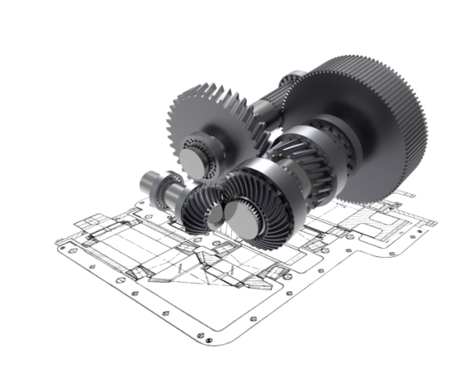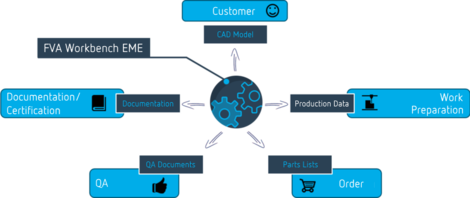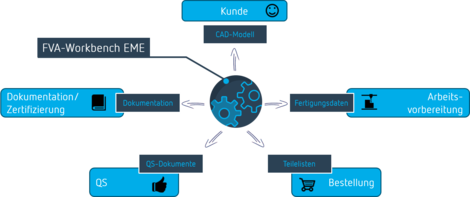Automation
Automation can be used for structured and organized processing of a list of tasks. The Automation Wizard helps you to quickly define calculation plans. This intuitive system can be used for procedural processing of design objectives and subsequent reporting. This enables time-saving execution of series of calculations, effortless modifications to gearbox models, and the centralized creation and storage of reports.
Scripting
The specially developed scripting user interface offers maximum flexibility when using FVA-Workbench 4.0. The interface makes it possible to control the simulation platform with text instructions based on the JavaScript scripting language. In contrast to automation, scripting can also be used with control structures and loops. Scripting can be used to efficiently perform calculations of variations, parameterize models, compare values, and realize iterations. The processing of complex tasks can be reduced to a single mouse click. Scripting allows customized output of data in any format. This simplifies the further processing of the calculation results or key figures, such as for quality assurance, order processing, or archiving. Predefined scripts are also a powerful tool for company-wide standardization. Calculation processes can be defined by the relevant experts and saved as a script, which can then be internally distributed and used.
Batch Operation
The use of automation can easily be illustrated using the FVA gearbox (Antriebstechnik magazine, 7/1988) as an example: an automation plan can be defined to run a series of calculations for verification of the load carrying capacity of the cylindrical gear stages. The system first calculates the cylindrical gear load carrying capacity according to ISO 6336 and the bevel gear load carrying capacity according to ISO 10300. Next, the shaft load carrying capacity according to DIN 743 and the bearing service life according to DIN 26281 are simulated. Each step generates a report in PDF format in a defined location. Then, a simple script can be used for optimization the load distribution across the facewidth. The tooth trace angle deviation will be adjusted until the face load factor K_Hbeta reaches a minimum value. Creation of the script requires a minimal amount of effort. Previous knowledge of programming is hardly necessary due to the high-quality documentation in the FVA Workbench 4.0 help system.
Using this method, gearboxes can be optimized and the accompanying documentation can be created in a very short time. In addition to the time savings in gearbox construction, it can also be used to create more reliable development processes.
Building on the scripting format of the FVA Workbench 4.0, batch operation fully realizes the potential for automation of simulations. Using batch operation, FVA Workbench 4.0 can be seamlessly integrated into existing workflows. FVA Workbench 4.0 starts automatically and executes the desired calculations and simulations. The results are then stored in a directory which can be accessed and processed by subsequent programs within the product development progress.
The combination of powerful calculation and simulation methods along with the possibilities for efficient integration into modern networked development processes makes the FVA Workbench 4.0 an effective product development tool for all areas of drive technology.





